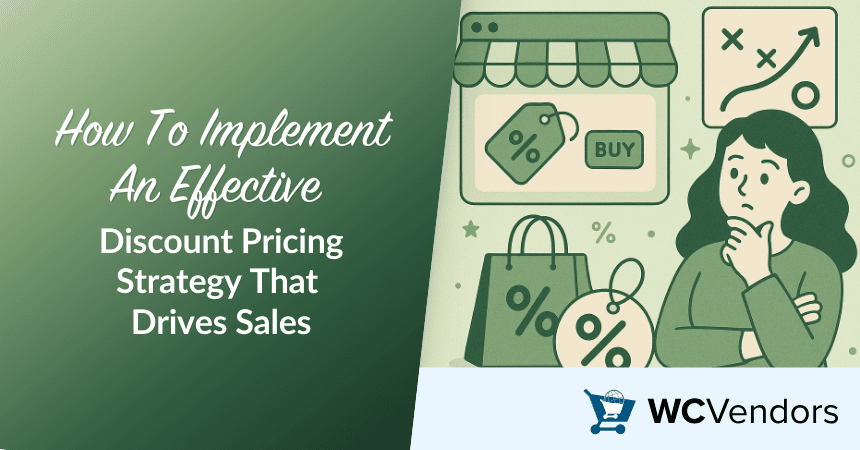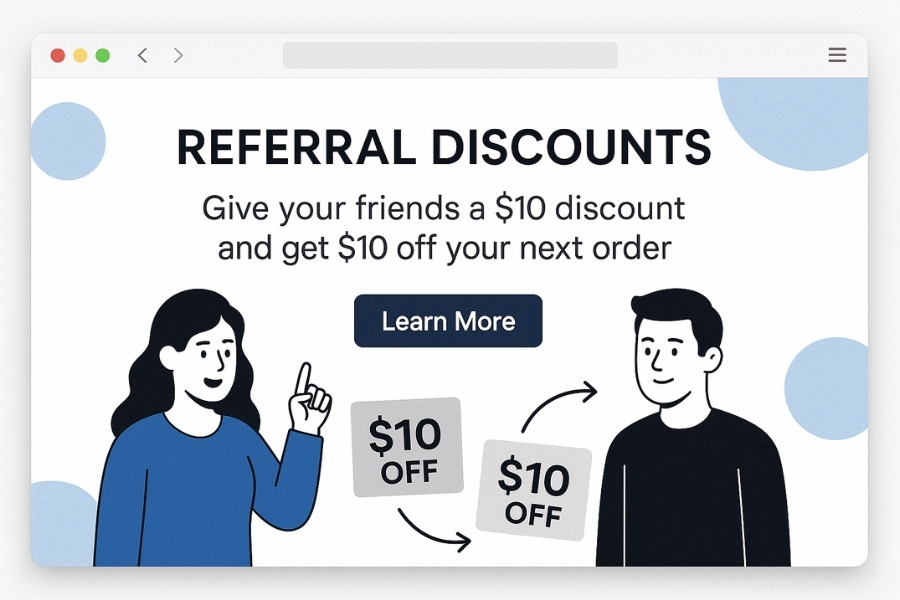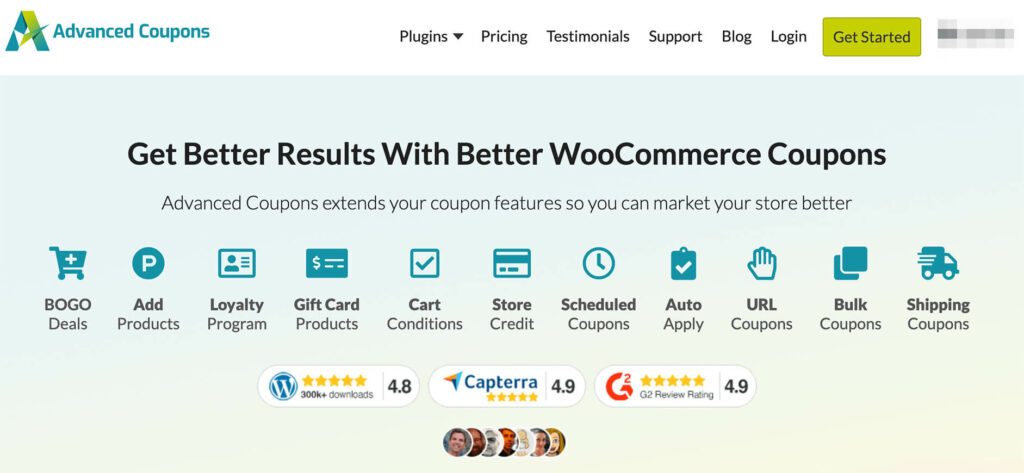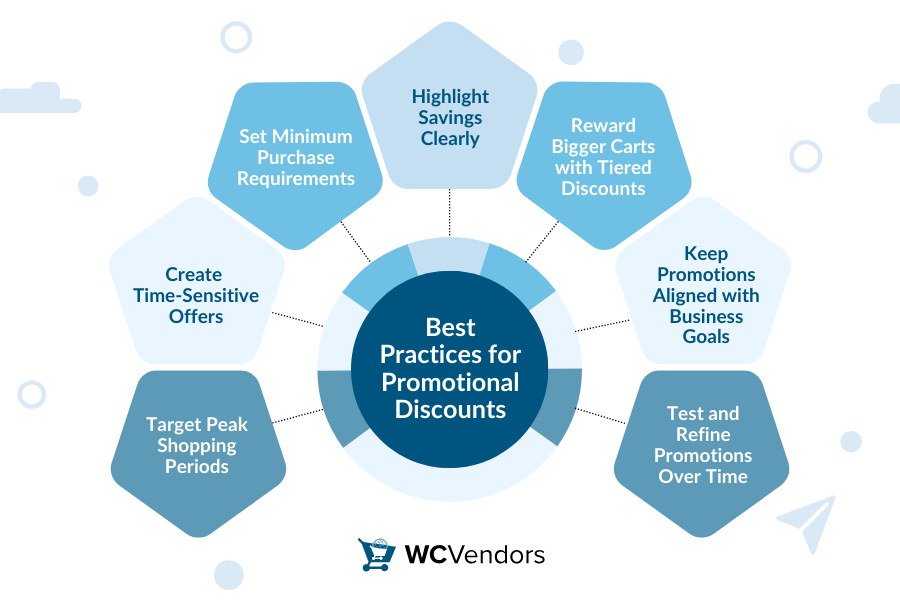
Running a WooCommerce marketplace means constantly balancing two priorities. You want to increase sales, but you also need to protect your profit margins. A strong discount pricing strategy can help you achieve both.
From our experience working closely with marketplace owners, thoughtful discount pricing can drive more sales, improve customer loyalty, and clear out old inventory. However, not all discounts are created equal. You have to be smart about it.
In this guide, we will walk you through how to design effective discount pricing strategies. We will also share trusted tools like Advanced Coupons for WooCommerce (ACFW) and show you how to coordinate discounts across multiple vendors without losing control of your business operations.
What Is Discount Pricing?
Discount pricing is a method where products are offered at a reduced price to encourage purchases. It is one of the most common pricing strategies used in eCommerce, particularly for WooCommerce marketplaces.
Of course, the real trick lies in using this pricing strategy at the right time, in the right way. Because done wrong? Discount pricing can hurt more than it helps.
When planned well, discount pricing works to attract new customers, drive more sales volume, and help move products that might otherwise sit in inventory!
Types Of Discount Pricing Strategy
Before you start planning, you need to know your options. There are several types of discount pricing strategy, and each serves a different purpose:
1. Volume Discounts

Volume discounts motivate customers to buy more by offering a lower unit price when larger quantities are purchased. Volume-based strategies are especially effective when vendors want to move higher quantities of inventory without lowering margins too drastically.
For example, a customer purchasing 10 units of a product might receive a 10% discount, encouraging bulk buying and increasing overall order size.
2. Seasonal Discounts

Seasonal discounts align promotions with holidays, shopping seasons, or special events to create urgency and drive seasonal demand. These time-sensitive promotions work well when planned in advance and promoted marketplace-wide.
For instance, during a summer sale, a store could offer 25% off all swimwear, encouraging customers to make purchases before the season ends.
Advanced Coupons can help you prepare for these events by allowing you to schedule coupons ahead of time. Scheduled Coupons make it easier to coordinate timing without extra manual effort.
Curious about building a seasonal pricing strategy? Check out our guide, “How To Implement A Winning Seasonal Pricing Strategy In Your Marketplace”

3. Clearance Sales

Clearance sales help vendors clear out older or slow-moving inventory to make space for new products.
A typical example would be offering up to 70% off last season’s clothing items to quickly move stock.
Clearance pricing not only frees up storage but also generates quick revenue from products that might otherwise linger.
4. Referral Discounts

Referral discounts reward existing customers for bringing new shoppers into your marketplace.
For example, a customer who refers a friend could receive a $10 discount on their next order, while the friend also enjoys a discount on their first purchase.
This strategy taps into word-of-mouth marketing while offering real value to loyal customers.
5. Tiered Discounts

Tiered discounts offer increasing savings based on how much a customer spends. This creates an incentive for customers to spend more to unlock better deals, directly boosting average order value.
For instance, you might set up a promotion where spending $100 earns a 10% discount on the total purchase.
Advanced Coupons makes setting up tiered discount campaigns straightforward. Vendors can create cart conditions like “Spend $100 and get 10% off,” ensuring the discounts are applied automatically once the spending threshold is reached.
Each type can be adapted into a larger customer discount strategy suited to your marketplace’s goals.
Planning An Effective Discount Pricing Strategy
A successful discount pricing strategy is never random. Every discount you offer should serve a clear purpose.
Start by deciding what you want to achieve. For example, if your goal is to increase average order value, offering tiered discounts is a smart move. Customers spend more to unlock bigger savings.
If you want to encourage bulk buying, a volume discount can motivate customers to buy larger quantities.
You can also create limited-time promotions where discounts are only available for a few days. This creates urgency without permanently slashing your pricing.
Using a plugin like Advanced Coupons for WooCommerce (ACFW) makes setting up these strategies much easier.

ACFW lets vendors create:
- BOGO Deals (Buy One Get One Free)
- Tiered Discounts (bigger discounts for bigger spending)
- Auto-Apply Coupons (so no manual coupon entry needed)
- Scheduled Coupons (perfect for seasonal promotions)
The All Access Bundle, priced at $119.50 per year, provides access to all these discount-focused features, giving marketplace owners everything they need to manage promotions without complicated coding or multiple plugins.
Discount Pricing Strategies In Multi-Vendor Marketplaces
Running discount campaigns in a multi-vendor marketplace presents a different challenge compared to managing a single store. You are not just handling your own discounts. You are coordinating promotions across multiple independent vendors.
Here are a few important strategies to make it work:
- Set marketplace-wide promotion guidelines
Offer vendors general rules or themes for big events like Black Friday or Summer Clearance sales. This keeps promotions consistent without restricting vendor creativity. - Encourage flexible discount structures
Recommend options like volume discounts or tiered pricing, but allow vendors to choose the exact percentages. This creates a unified shopping experience while giving sellers control. - Use scheduling tools to time promotions
Tools like Advanced Coupons for WooCommerce (ACFW) let vendors schedule start and end dates for their deals. This helps prevent confusion and ensures promotions launch at the right moment. - Coordinate marketing messaging
Even if each vendor offers different discounts, unified marketplace banners, emails, and announcements can create a seamless promotional experience for customers. - Centralize major marketplace-wide discounts if needed
For big campaigns, you might apply a standard discount across all vendors yourself. This requires careful setup but can maximize impact during key sales seasons.
Clear communication and the right tools make a huge difference when managing discount pricing strategies across a multi-vendor marketplace.
How To Calculate Discount Prices Correctly
Discounts need to be calculated carefully. Otherwise, they can easily erode your profits.
Start by looking at the original price of goods and your cost structure. Then, set a discount that leaves enough room for a healthy margin.
For example, if the original price is $100 and the cost is $60, a 20% discount lowers the price to $80, still giving you a $20 profit. Calculating the right discount helps ensure you are growing revenue without sacrificing your financial health.
Best Practices For Promotional Discounts
Timing and structure play a major role in the success of promotional discounts. Well-planned promotions not only drive quick sales but also strengthen customer engagement over time.
Here are some best practices to follow:
1. Target peak shopping periods
Building on earlier seasonal strategies, focus on planning around the highest-traffic shopping days, like Black Friday, Cyber Monday, or Christmas. Aligning discounts with seasonal demand ensures promotions resonate when customers are most likely to buy. Early preparation gives vendors time to align inventory and marketing for maximum impact.
2. Create time-sensitive offers
Short-term promotions often outperform ongoing discounts. So, set clear start and end dates to create a sense of urgency. Customers who know a deal is ending soon are more likely to act quickly.
3. Set minimum purchase requirements
Encourage larger purchases by requiring customers to meet a minimum spend to unlock a discount.
For example, offer 10% off orders over $75 or free shipping for purchases over $50. Minimum thresholds not only increase cart sizes but also protect your margins.
4. Highlight savings clearly
Make sure customers immediately understand how much they are saving. Use bold labels like “Save 20% Today” or show the original price crossed out next to the discounted price. Clear messaging improves conversion rates and removes confusion at checkout.
5. Reward bigger carts with tiered discounts
Remind customers that spending more can unlock bigger savings through tiered discounts. For example, offer 5% off when spending $50, 10% off at $100, and 15% off at $200.
6. Keep promotions aligned with business goals
Are you trying to clear out inventory? Drive higher order values? Acquire new customers?
Plan each promotion with a specific goal in mind, whether it’s clearing inventory, increasing order sizes, or bringing in new customers.
7. Test and refine promotions over time
What works during one season may not work the next. Monitor performance metrics like conversion rates, average order values, and coupon redemption rates. Adjust future promotions based on real results rather than guesswork.
Conclusion
A strong discount pricing strategy is more than just lowering prices. It is about offering real value in a way that strengthens your marketplace’s position and grows your revenue responsibly.
By understanding the different discount pricing strategy and using trusted tools like Advanced Coupons, you can design smart, customer-focused promotions that align with your business goals.
To successfully implement a strong discount pricing strategy, focus on the following areas:
- Types of Discount Pricing
- Planning an Effective Discount Pricing Strategy
- Discount Pricing Strategy in a Multi-Vendor Marketplace
- Calculating Discount Prices Correctly
- Best Practices for Promotional Discounts
Always calculate your discount prices carefully, weigh the pros and cons before making changes, and structure your customer discount strategy around clear objectives. Over time, consistent and thoughtful discount pricing will help you build a marketplace that customers return to again and again.
Frequently Asked Questions
How often should I run discount promotions?
Running promotions a few times per year around major events like Black Friday or seasonal changes is usually enough. Avoid constant discounting to protect your brand’s value.
What is the easiest type of discount to set up?
Percentage discounts are the easiest to create. They apply a flat discount, such as 10% off, and work well for most products and customer types.
Should I combine free shipping with discounts?
Yes, combining free shipping with discounts can increase conversions. It removes two major buying obstacles: price and shipping cost.
How can I track the success of a discount campaign?
Monitor metrics like coupon usage, sales volume, average order value, and customer retention after the promotion ends. Use your WooCommerce reports or plugins like Advanced Coupons to help.

